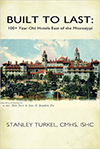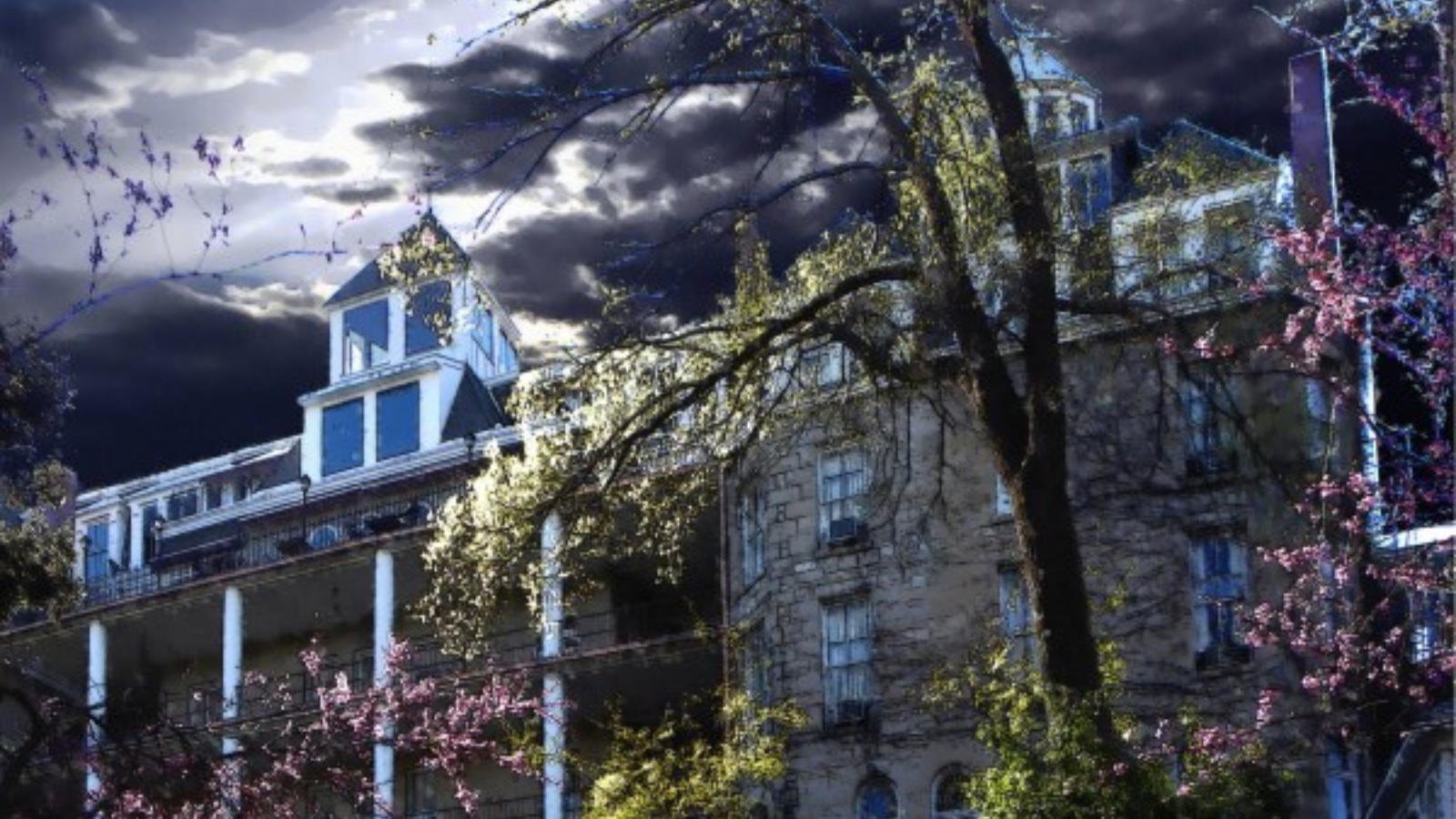Receive for Free - Discover & Explore eNewsletter monthly with advance notice of special offers, packages, and insider savings from 10% - 30% off Best Available Rates at selected hotels.
Guest Historian Series: Stanley Turkel, CMHS
Nobody Asked Me, But... No. 148;
Hotel History: Beekman Arms and Delamater Inn (1766), Rhinebeck, New York*
By Stanley Turkel, CMHS
In the early 1700s, William Traphagen established a traveler's inn in Ryn Beck, which was a small settlement carved out of a forested area initially inhabited by the Sepasco Indians and colonized since the 1630s by the Dutch. In 1766, William Traphagen's son, Arent, relocated Traphagen Tavern to the town crossroads, where the King's Highway intersected the Sepasco Trail, winding its way down to the river. The Beekman Arms has been at the center of Rhinebeck ever since.
Bogardus Tavern, as the inn was known during the last third of the 18th century, helped host the American Revolution. The 4th Regiment of the Continental Army drilled on its front lawn before the war, in 1775. It was on the main road through the Hudson Valley, and its neighbors played major roles in the creation of the United States. A sturdy stone building originally built to withstand possible Indian attacks, the Bogardus Tavern served similar purposes against the vicissitudes of waging war on the British Crown. George Washington, Philip Schuyler, Benedict Arnold and Alexander Hamilton slept here and probably ate, drank, argued, and laughed here during the Revolutionary War.
By 1785, the King's Highway had become the new nation's Post Road. In 1802, Asa Potter bought the inn from Everdus Bogardus. The year of 1804 saw an intense race for the governorship of New York State. Both candidates had headquarters in Rhinebeck, General Morgan Lewis in Potter's Tavern and Vice President Aaron Burr down the street at the Kip Tavern. By July of that year, Burr had killed Alexander Hamilton in a duel over quarrels which began in these rooms.
As Rhinebeck continued to grow in the early 19th century, in both size and popularity as a stage stop between New York City and Albany, the inn welcomed travelers as well as their horses. It was also the center of the town's civic growth: it served as the town hall, theater, post office, and newspaper office. The ballroom, which some called the Long Room, hosted lodge meetings, teas, public auctions, even Sunday services conducted by traveling preachers.
The village was incorporated in 1834. Ten years later, Alexander Jackson built the Henry Delamater House which still stands today, one of the best examples of the early use of the Gothic Revival style in American residential architecture. The famous newspaper editor Horace Greeley was a frequent guest. William Jennings Bryan grandly orated from a second-story window to an enthusiastic gathering on the front lawn. In 1888, when Benjamin Harrison was nominated for president, he and his running mate, Levi P. Morton of nearby Rhinecliff, assembled in the inn with their supporters where they learned the convention had picked them.
During the prosperous years between the Civil War and World War I, many prominent and wealthy New York families built country estates on the banks of the Hudson River. Luxurious private railroad cars terminated at Rhinecliff Station—a handsome building erected under the influence of former Vice President Morton and Colonel John Jacob Astor IV who later was a casualty of the sinking of the Titanic. A rail line also connected Rhinecliff and Connecticut, easing travel to and from the area. People called it the Hucklebush Line because the engineer was inclined to stop the train at one of the many good berry-picking patches along the way.
Rhinebeck became known as the "Parlor of Dutchess County" for its shady streets, village hospitality, gracious homes, and grand estates. The local black angus and greenhouse violets gained national attention.
In 1918, the inn underwent extensive renovation, including the addition of today's ballroom, under the ownership of Tracy Dows. His son, Olin Dows, was a well-known painter whose murals recreated the town's beginnings on the walls of the Rhinebeck post office. His Harvard classmate and close friend Thomas Wolfe frequently visited, and his prolonged retreats here for five years planted the seeds for what became his 1935 novel, Of Time and The River.
Hyde Park neighbor and U.S. President Franklin Delano Roosevelt was a frequent guest at the Beekman Arms. He concluded every campaign both for governor and for president by talking from the front porch. As an avid stamp collector and amateur historian, President Roosevelt was responsible for the construction by the Works Progress Administration (WPA) of the Rhinebeck post office next to the historic Beekman Arms. The building is a replica of a portion of the Hendrick Kip house, the earliest known structure in Rhinebeck.
As the years rolled by, 'the Beek', as many locals call it, continued as the center of social and civic life. It hosted thousands of town and service club meetings, weddings, all variety of parties and celebrations—and, of course, leisurely Sunday brunches and dinners. In the 1930s, young ladies training to be practical nurses relaxed at the inn after their hospital shifts. Firefighters and World War II soldiers paraded and posed for photographs on the surrounding lawn and streets. Lewis F. Wine was the innkeeper in those years.
In the 1980s, the Greenhouse Room was added to the front of the ballroom, and in 1995 all of the guestrooms were completely renovated. But few changes have been made to the original structure of strong oaken beams and broad plank floors. In the dining rooms and the tap room, Rhinebeck residents and people traveling through or visiting here continue to gather and eat and drink and talk, as they have since 1766.
The Beekman Arms and Delamater Inn are members of the Historic Hotels in America.
*excerpted from my book Built To Last: 100+ Year-Old Hotels East of the Mississippi (AuthorHouse 2013)
Return to Beekman Arms and Delamater Inn
*****
About Stanley Turkel, CMHS
 Stanley Turkel was designated as the 2014 and 2015 Historian of the Year by Historic Hotels of America, the official program of the National Trust for Historic Preservation. This award is presented to an individual for making a unique contribution in the research and presentation of history and whose work has encouraged a wide discussion, greater understanding and enthusiasm for American History.
Stanley Turkel was designated as the 2014 and 2015 Historian of the Year by Historic Hotels of America, the official program of the National Trust for Historic Preservation. This award is presented to an individual for making a unique contribution in the research and presentation of history and whose work has encouraged a wide discussion, greater understanding and enthusiasm for American History.
Stanley Turkel is one of the most widely-published authors in the hospitality field. Two of his hotel books have been promoted, distributed and sold by the American Hotel & Lodging Educational Institute (Great American Hoteliers: Pioneers of the Hotel Industry and Built To Last: 100+ Year-Old Hotels East of the Mississippi). A third hotel book (Built To Last: 100+ Year-Old Hotels in New York) was called "passionate and informative" by The New York Times. His fourth hotel book was described by The New York Times: "Nostalgia for the City's caravansaries will be kindled by Stanley Turkel's...fact-filled...Hotel Mavens: Lucius M. Boomer, George C. Boldt and Oscar of the Waldorf."

Built to Last: 100+ Year-Old Hotels East of the Mississippi is available for purchase from the publisher by visiting bookstore.authorhouse.com.




































